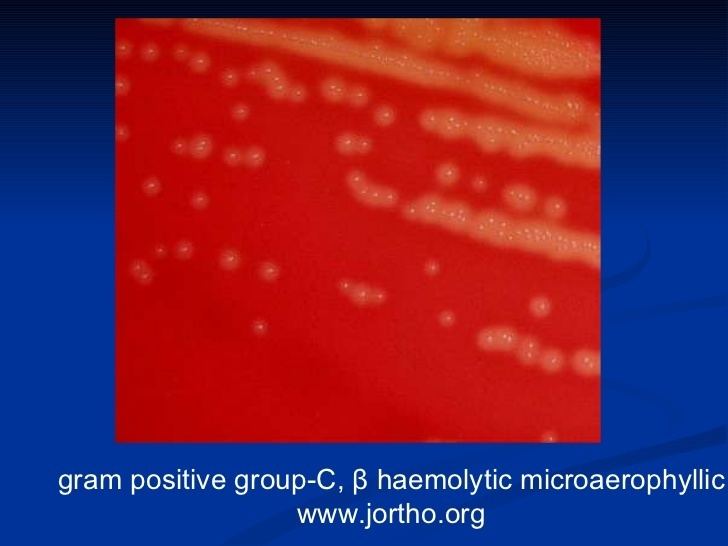Order Lactobacillales Rank Species | Phylum Firmicutes Higher classification Streptococcus | |
 | ||
Scientific name Streptococcus constellatus Similar Streptococcus anginosus, Streptococcus intermedius, Bacteria, Streptococcus mitis, Streptococcus oralis | ||
Introduction
Streptococcus constellatus is a species of Streptococcus part of the normal flora in the oral cavity, urogenital region, and intestinal tract. However, it can frequently cause purulent infections in other parts of the body. DNA homology studies and 16S rRNA sequence analysis demonstrate S. constellatus belongs to the Streptococcus anginosus group (milleri group) along with Streptococcus intermedius and Streptococcus anginosus.
Contents
- Introduction
- Morphology
- Metabolism and Growth
- Biochemical Characteristics
- Disease
- Subspecies
- S constellatus subsp constellatus
- S constellatus subsp pharyngis
- References
Morphology
S. constellatus are gram positive, non-sporing, non-motile, catalase negative cocci. The cells are small, normally 0.5-1μm in diameter and form short chains. Their cell wall peptidoglycan is composed of Lys-Ala1-3 and has a DNA G+C content of 37-38%.
Metabolism and Growth
In the presence of CO2 growth is enhanced, under aerobic conditions growth is reduced, and some strains require anaerobic conditions to grow.
“S. constellatus” produces major amounts of lactic acid, fermented glucose, maltose and sucrose, but not lactose and hydrolyzed aesculin.
Biochemical Characteristics
The typical species is Lancefield Groups A,C, G, and F, with the remaining NG (non-groupable) and haemolysis on blood agar is β-haemolytic and NH (non-haemolytic).
Disease
Clinically it is associated with abscess formation in the upper body and respiratory tract. It has also been found to be involved with pulmonary exacerbations in cystic fibrosis patients.
Subspecies
Evidence supports the further subdivision of S. constellatus into two subspecies, S. constellatus subsp. constellatus and S. constellatus subsp. pharyngis.
S. constellatus subsp. constellatus
Normally found in the oral cavities and upper respiratory tracts and isolated from purulent human infections, including appendicitis. Strains are frequently β-haemolyic and belong to Lancefield Group F or are nonhaemolytic (α and γ) and seologically ungroupable. However, a few strains react with Lancefield Group A, C, and G antisera.
Most strains produce:
Most strains do NOT produce:
S. constellatus subsp. pharyngis
Normally found in infections of the human throat, patients with pharyngitis. Strains frequency are β-haemolytic and belong to Lancefield C.
Most strains produce:
Most strains do NOT produce:
